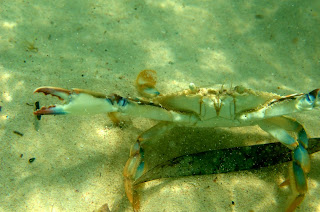Outex review.
I recently got an Outex housing to protect my D7000 during snorkeling on a recent vacation. I've normally played things loose and fast, getting the camera damp during a Chinese vacation and sandy in Monterrey and after each of these times trying to get things cleaned/sheltered/what-not I thought a more permanent solution would be better.
I would like to start off with customer support; I learned of the Outex housing very close to the time I was to leave for vacation. They helped to make sure that I would be able to get the right gear in time, even though they had a lot of orders, they check inventory and presented options for items that they where currently out of and in the end, I think I came away with a more robust solution. (I ended up getting an 82mm lens ring instead of the 77mm that I needed and a larger housing for the camera. Thus I only needed to get a 77-82 step-up ring, which was not a problem. And the larger housing allows me to use my battery grip that I have for my D7000.)
Installation: The housing is tough and upon first installation I was hesitant on trying to stretch it around the camera. Watching the video was a little deceptive since you can watch it installed rather easily. I will say that after the initial installation and removal, I became more confident and by the third or fourth installation, I was stretching it with little worry. (One thing I did do was to remove the strap clips that where on the strap grommets on the camera. I did not want to have yet another sharpish thing to cause issues.)
One problem was the time that I forgot the Outex strap harness. Because I did not have the harness, the housing was a bit balloony but not bad. The problem that I did have was the eyepiece popping off occasionally. But this was basically my fault and the harness would have helped keep the eyepiece in place because there would be less area for movement..
Usage: Once in the water, I was a bit anxious to submerge the camera. But when my daughter scared up a crab, I bit the bullet and tried to get some pictures.
After that, I had fun running around in the tide pool trying to grab pictures. Too bad there was very little life for pictures. After that we did some snorkeling, this was a bit better but I noticed that for underwater, I would need a flash to help bring out the colors of life.
The housing also was very nice in the sand. I have always been worried about getting sand into the camera or on the sensor. With this housing I was not worried even when the sand was extra fine. So I will be using this for our annual beach party.
Issues: The only real issue I had was with my work-flow. I normally take a picture and look at it right afterwards on the LCD screen, to check composition and exposure. Well with the eyepiece being the only opening on the back, that did not work. I did not realize how much I have become dependent on the screen. When I shot film, this was not an option and well, it is hard to go back.
Now Outex is actually coming out with what they call the Big-O. This product replaces the eyepiece in the rear with a large opening that will expose the LCD screen and I think I will really like this and it will help with my work-flow.
Summary: I am really pleased with how things have turned out. They are a small company and still able to give personal service while being very busy. They have a good product which looks to get better and I have a housing that I can use in many ways and situations.
Also the nice thing is that the larger housing will also hold a larger camera when I upgrade, like the D600 or D800.
Advice:
- Practice a few time installing and removing the housing. It really is something that you will want to know how to do before you get out on the water or in environment and trying to fix/change/adjust the setup.
- One should also get the feel for controlling the camera through the housing, it is not bad, just different and it is surprising just how much you may already do by feel.
- Also learn where you can get information about your settings. Pay attention to the display in the viewfinder since you will not be able to see dial settings.
- Realize that things like auto-focus and auto-exposure will likely not work or work poorly underwater.
Lastly, it was fun having people look and comment about the big blue object that I was carrying and realize that I had a 'nice' camera with me. There where several jealous looks from people with resort disposable waterproof cameras. Also the hardest thing was getting used to underwater photography and not the gear.


